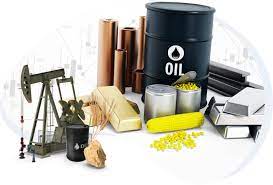
Doug King set up his hedge fund in the early days of the commodity super-cycle in 2004. It was perfectly timed: voracious Chinese demand lifted the price of everything from oil to copper to record highs. Investors flooded the commodities sector. At the peak, King’s Merchant Commodity Fund was managing about $2 billion.
But the boom ended abruptly after the 2008 global financial crisis and the onset of the U.S. shale revolution. Prices plunged, big institutional money got out and many specialist hedge funds closed.
Fast forward more than a decade and King is having one of the best years of his career: a broad-based commodities boom has pushed up his hedge fund nearly 50% this year as raw materials from steel to soybeans hit multi-year highs. Commodities are back, and from pension funds to physical commodity traders, everyone is making money. The question now is whether it’s a temporary snapback from the pandemic or signals a longer-term shift in the structure of the global economy. King is in no doubt.
“We are facing a structural inflation shock," King said. “There’s a lot of pent up demand, and everyone wants everything now, right now."
For the first time since the pre-crisis years before 2008, the commodities boom means central banks are fretting about inflation. The rally will have a political impact, too. With oil back at $75 a barrel, Saudi Arabia and Russia are back in the driving seat of the global energy market — a remarkable come back from negative prices just over a year ago. The boom is also an unwelcome development for policymakers tackling the climate crisis: rising commodities prices will make the shift more expensive.
China, reliant on raw materials imports to feed millions of factories and building sites, is so nervous the government has tried to force prices lower, threatening crackdowns on speculators and releasing strategic stockpiles. It’s worked to some extent — copper has given up all its gains this year— but prices across the complex remain robust: iron ore is still near a record, U.S. steel prices have tripled this year, coal has risen to a 13-year high and natural gas prices are on a tear.
Even after the recent pullback, the Bloomberg Commodities Spot Index, a measure of 22 raw material prices, is up 78% from the March 2020 low when the pandemic first hit.
And crude oil, the global economy’s most crucial commodity, keeps powering higher as the world emerges from lockdown and the OPEC+ alliance puts a lid on supply. Benchmark Brent prices are up 45% this year, prompting traders and Wall Street banks to talk again about the potential for prices to surpass $100 a barrel for the first time since 2014.
As prices have surged, so has Wall Street’s interest. The annual Robin Hood investor conference, which every year congregates hedge fund luminaries from Paul Tudor Jones to Stanley F. Druckenmiller and Ray Dalio, featured a panel on commodities earlier in June — the first time in at least five years the conference has found time to discuss raw materials.
Jeff Currie, Goldman Sachs Group Inc.’s veteran head of commodities research, who argues for a long-term bull market across commodities despite the recent sell-off in metals and grain, says there’s room for a lot more investment to in the market.
“Commodities are back in vogue," Currie said, but so far the excitement about sky-high prices hasn’t yet attracted the money flows the sector harnessed during the 2004-2011 boom.
For those investors and physical traders who have already poured cash into commodities, betting on post-pandemic recovery, the rally has showered them in money.
Take Cargill Inc. The world’s largest trader of agricultural commodities made more money in just the first nine months of its fiscal year than in any full year in its history as net income surged above $4 billion.
Or Trafigura Group, the world’s second biggest independent oil trader, where the more than $2 billion in net profit posted in the in six months to the end of March was nearly as much as it made during its previous best ever full year.
“Our core trading divisions are firing on all cylinders," said Jeremy Weir, the chief executive of Trafigura.
For consumers, however, the commodity boom means rekindling memories of high inflation. For now, companies are mainly absorbing the brunt of the impact, pushing factory inflation in some countries, including China, to their highest in more than a decade. But sooner or later, consumers will pay the price, too.
From Unilever Plc to Procter & Gamble Co., companies have announced plans to raise prices in the near term.
“We’re seeing levels of commodity inflation that we have not seen in a very long time," Graeme Pitkethly, the chief financial officer at Unilever, told investors after disclosing first quarter results. “The commodity inflation that we’re seeing is impacting all businesses."
The speed and breadth of the rally, affecting dozens of raw materials from vegetable oil to coal, have prompted many to talk about a new commodities supercycle, similar to the one that started nearly two decades ago as China’s rapid industrialization changed the structure of the global economy.
Get watch our process Click here Ideal Stock Investment , daliy call profit, Market News, Fill Our ask an Expert form
For Ask An Expert Advice Give A Missed Call On - 0731-4994956
